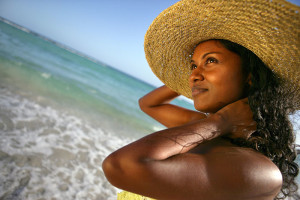Staying Safe in the Sun While Relaxing in Mombasa
 While Kenya is a land of diverse geography ranging from low lying plains to glacial mountains, the port city of Mombasa is tropical and warm year-round. Mombasa itself is an island separated from the mainland by two creeks but accessible from Moi International Airport.
While Kenya is a land of diverse geography ranging from low lying plains to glacial mountains, the port city of Mombasa is tropical and warm year-round. Mombasa itself is an island separated from the mainland by two creeks but accessible from Moi International Airport.
Being surrounded by water it is an ideal shipping, trading, and an aquatic vacation spot. Many beach resorts offer everything from beach bumming, pool lounging, deep sea boating, fishing, diving and kite surfing; but there is also the wildlife, safaris, and backpacking. When you’re out enjoying your time, you should take the proper solar precautions so you can enjoy the laid back beach get-a-way.
While the Mombasa travel information websites do not recommend anything specific, the forum posts of previous traveler’s do. Their suggestions are nothing out of the ordinary: wide brimmed hats, sunglasses, even supplements derived from ferns, Polypodium leucotomos that should be taken in the morning.
The most crucial was the regular application of sunscreen that blocks both UVA an UVB ultraviolet rays. The SPF number only relays how well it blocks UVB rays; to block both UVB and UVA ultraviolet rays you’ll need an SPF of 15 or above and a sunscreen that contains zinc oxide, titanium dioxide, avobenzone, or oxybenzone.
It is also suggested that you put on sunscreen twenty to thirty minutes before going out into the sun, and that your first application be put on without clothes. You want to make sure you cover every inch of your skin, whether or not it will be exposed to direct sunlight.
For hard to reach areas such as your back, have someone help you. And be sure the sunscreen is new or mostly new, only a few months old. Important blocking compounds can become inactive after long periods of non-use; thus, even frequent re-applying will be futile.
While Mombasa is a tropical, equatorial climate, standard preliminary solar precautions will help to ensure a pleasant vacation regardless of your chosen activities. The important thing is to use these recommendations as a starting point of reference. Also check the weather forecast, usually January and February are their rainy months while April and May are dry and hot; but are they experiencing a drought, a heat wave, or unusual amounts of rain?
Weather is unpredictable and can act as a modifier but it is a safe bet that it will be hot. So to reiterate, wear wide brimmed hats, sunglasses, consider taking supplements with Polypodium leucotomos in the mornings before outdoor activities, put sunscreen on your entire body twenty to thirty minutes before going out, and regularly apply sunscreen that block both UVA and UVB ultraviolet rays.


 KES 14,350 PPS
KES 14,350 PPS

 KES 12,600 PPS
KES 12,600 PPS 



